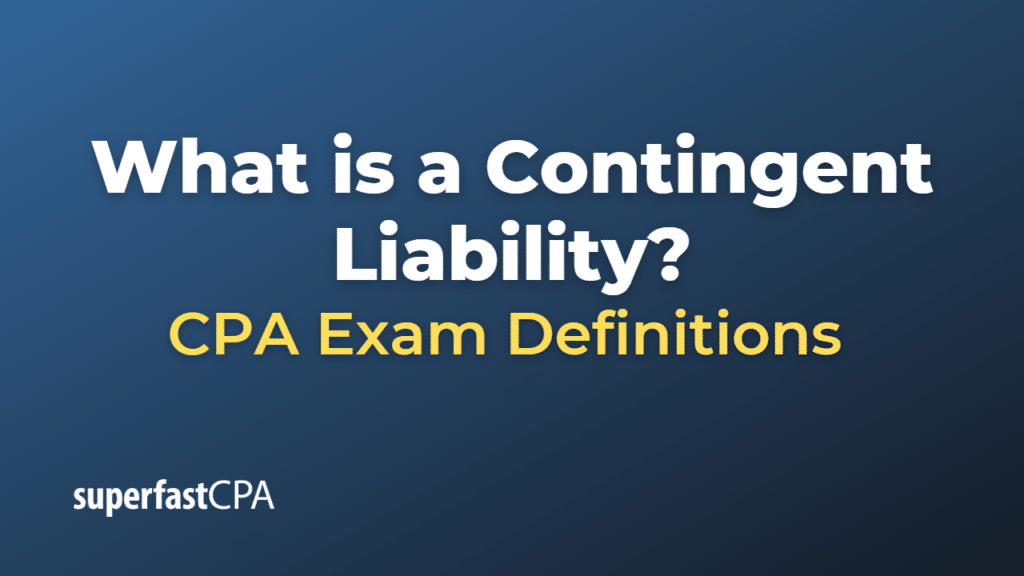Contingent Liability
A contingent liability is a potential financial obligation that may arise in the future, depending on the outcome of a specific event or situation. Contingent liabilities are uncertain and not yet confirmed, as they depend on the occurrence of future events that are beyond the company’s control. These potential obligations are recorded in a company’s financial statements when it is probable that the liability will occur and the amount can be reasonably estimated.
Contingent liabilities can arise from various situations, such as:
- Lawsuits and legal claims: A company may face a potential liability if it is involved in a lawsuit or legal dispute. The outcome of the lawsuit and the potential damages or settlements are uncertain and depend on the court’s decision or negotiated settlements.
- Product warranties and guarantees: Companies that offer warranties or guarantees on their products may face contingent liabilities if they need to repair or replace defective products in the future.
- Environmental liabilities: Companies that operate in industries with potential environmental risks, such as mining, oil and gas, or chemical manufacturing, may face contingent liabilities related to environmental cleanup, fines, or penalties if they cause environmental damage.
- Taxes and regulatory penalties: Companies may face contingent liabilities related to potential tax assessments, fines, or penalties if they are found to have underpaid taxes or violated regulations.
- Contingent performance obligations: Companies may have contingent liabilities related to contracts or agreements that require them to perform specific actions or make payments if certain conditions are met or specific events occur.
Accounting standards require companies to disclose contingent liabilities in the notes to their financial statements if the likelihood of the liability occurring is more than remote but less than probable, or if the amount of the potential liability cannot be reasonably estimated. If a contingent liability is both probable and reasonably estimable, it should be recognized as a liability on the company’s balance sheet.
Contingent liabilities can have a significant impact on a company’s financial position and risk profile, as they represent potential future cash outflows and obligations that could negatively affect the company’s liquidity, profitability, and financial stability.
Example of a Contingent Liability
Let’s consider an example of a contingent liability arising from a lawsuit:
TechCo, a technology company, has been sued by a competitor, CompCo, for alleged patent infringement. CompCo claims that TechCo’s latest product infringes on its patented technology and is seeking $10 million in damages. The lawsuit is ongoing, and the final outcome is uncertain, as it depends on the court’s decision or a potential settlement between the two parties.
In this situation, the potential $10 million payment that TechCo may have to make if it loses the lawsuit represents a contingent liability. TechCo is uncertain about the outcome of the lawsuit, and the obligation to pay the damages depends on the court’s ruling or a negotiated settlement.
According to accounting standards, TechCo would need to assess the likelihood of losing the lawsuit and the possibility of having to pay the damages. If TechCo determines that it is probable they will lose the lawsuit and the amount of damages can be reasonably estimated, they should record the $10 million contingent liability on their balance sheet. If the likelihood of losing the lawsuit is considered more than remote but less than probable, or if the amount of damages cannot be reasonably estimated, TechCo should disclose the contingent liability in the notes to their financial statements.
This contingent liability can impact TechCo’s financial position and risk profile, as it represents a potential future cash outflow and obligation that could affect the company’s liquidity, profitability, and financial stability. Investors, creditors, and other stakeholders may take this contingent liability into account when assessing TechCo’s financial health and risk profile.













